Are you wondering how to use the My Heritage Chromosome Browser tool? In this post, I'll show you how, as well as how to understand the results.
My Heritage is one of my favorite DNA testing companies. The DNA match list is very easy to search through, filter, sort, and understand.
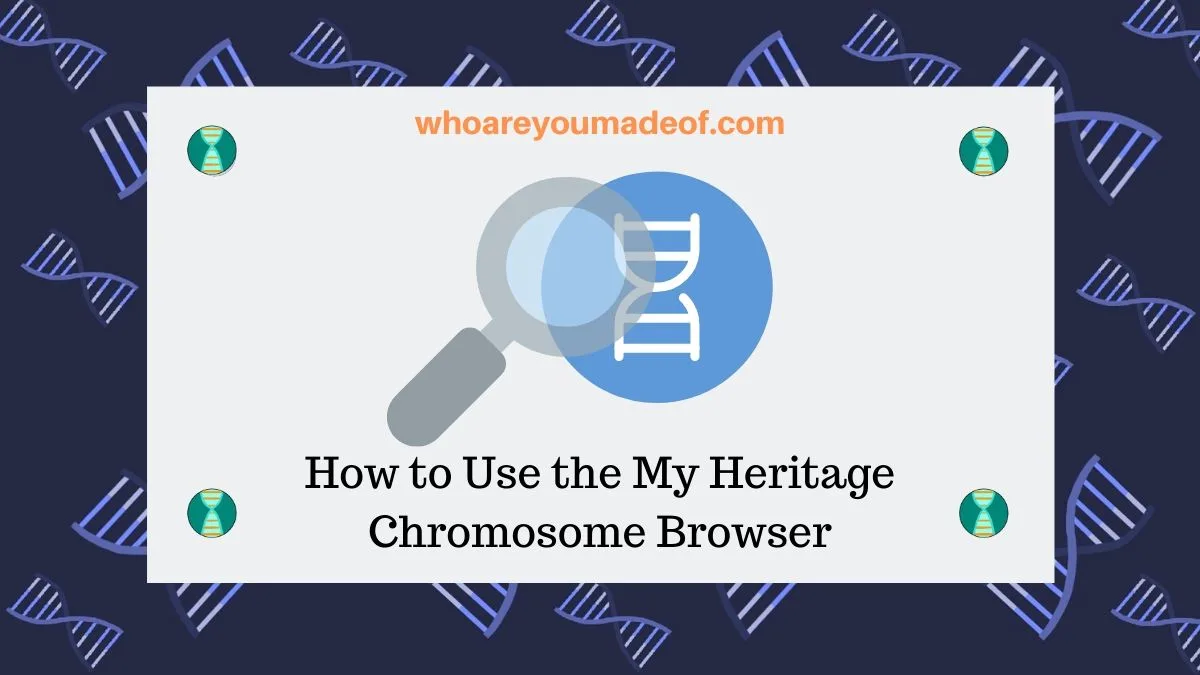
The chromosome browser tool makes things even easier and can allow us to learn even more from our matches.
What can you learn from a chromosome browser?
A chromosome browser provides detailed information about DNA segments shared between two matches. These details include:
- The chromosome number where the identical segment can be found
- The start and end position of the DNA segment, or segments
- The length (in cMs) of the matching segment
- The number of SNPs tested to identify matching segment
While we know that our DNA matches are related to us, without a chromosome browser, we can only see the basics about our genetic relationship.
If you have ever been frustrated with just being able to see the total number of shared centimorgans and number of segments with no further detail, you will love chromosome browsers.
The information that we can access on the chromosome browser can help us perform intermediate to advanced DNA analysis. For example, we might want to know the size of all DNA segments if we suspect endogamy.
We can also triangulate DNA segments or learn how to do chromosome mapping.
How to access the My Heritage Chromosome Browser
In order to access the My Heritage chromosome browser, you will need to be logged in to your My Heritage account. You can access the DNA analysis tools, like the chromosome browser, from any main page on the My Heritage site.
To access the chromosome browser, hover your mouse over the "DNA" tab on the top menu. A drop-down menu will appear, and you should choose the "DNA Tools" option:
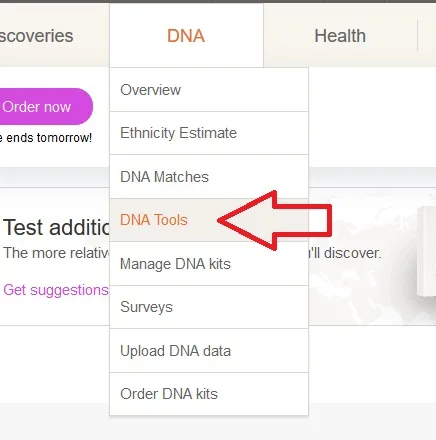
The next screen is where you will find the available DNA tools. Currently, you can find the Chromosome Browser, AutoClusers, and Ethnicity Map on this page.
We will choose the Chromosome Browser for this post. Click "Explore" to access the tool:
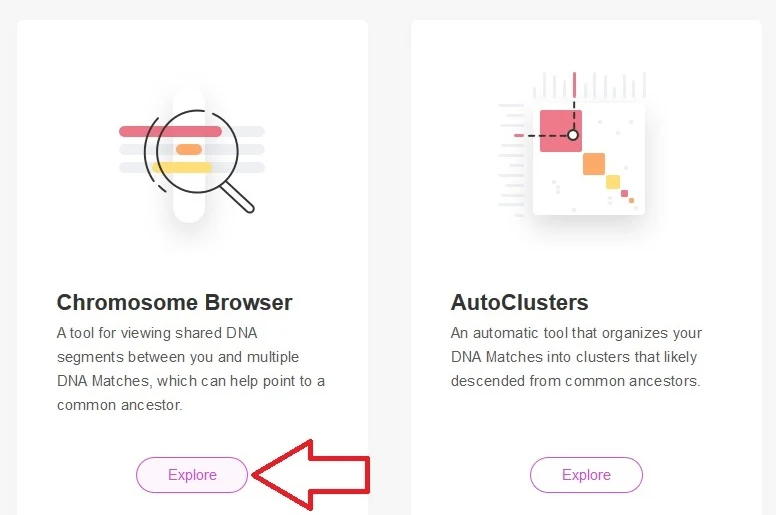
On the next screen, we will be able to choose the names of the DNA matches that we would like to compare in our browser.
Which DNA matches to compare on My Heritage chromosome browser
While you can compare your DNA with any of your DNA matches, it most sense to choose specific DNA matches for the tool. For beginners, I recommend choosing matches to whom you already have determined your connection.
If you already know how you are connected to a match, then the segment details are more useful to you. Once you know which segments you share with this match, you can then find other people who match on the same segment, which could mean that you are all descended from the same ancestor.
In other words, identifying segments you share with a known relative could help you figure out how you are connected with your other matches.
In order to select a DNA match to compare with your DNA, scroll down to the match or enter their name in the search bar. Once you have located their name, click the "plus" sign to add them to the chromosome browser.
In the image below, you can see that I would like to compare John's DNA with my relative:

Once I have chosen my match, I can scroll up to the top of the screen and click the "Compare" button to run the analysis.
How to understand My Heritage chromosome browser results
Once you have chosen your matches and clicked "Compare", you will see the results of the chromosome browser analysis. You will see a visual representation of your 22 numbered chromosomes.
If there is a matching segment between yourself and the DNA match that you selected, you will see a pink bar. Each pink bar represents an identical segment.
We might share only one segment or many segments with a match.
In the image below, we see the results of a comparison between Albert and John. We can see that they share four identical segments:
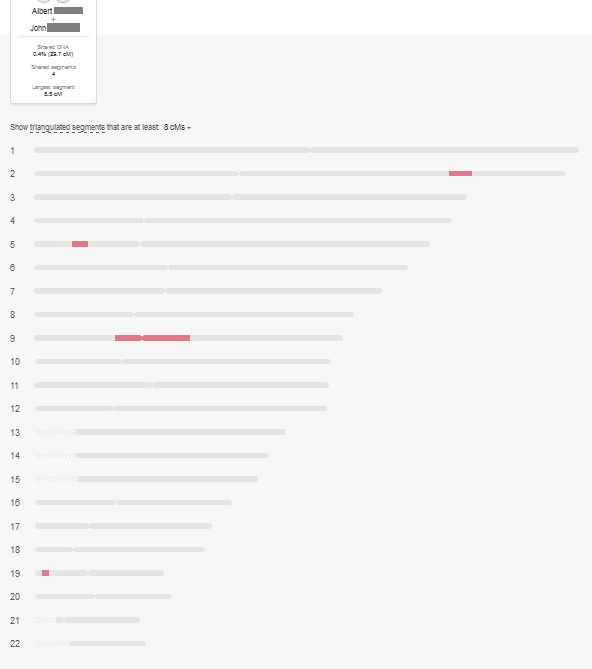
It should be noted that some chromosomes are shorter than others, and identical segments on those chromosomes will appear longer than segments on longer chromosomes.
For example, the identical segment on Chromosome 9 in the image above is actually smaller than the segments on Chromosomes 2 and 5. This is because Chromosome 9 is significantly shorter than the other two.
That's why you should always hover over the identical segment. It's best to know exactly how big the segment is.
If we hover over one of the pink bars, we can see more detail about the shared segment. Take a look at the image below from the Chromosome 9 segment:
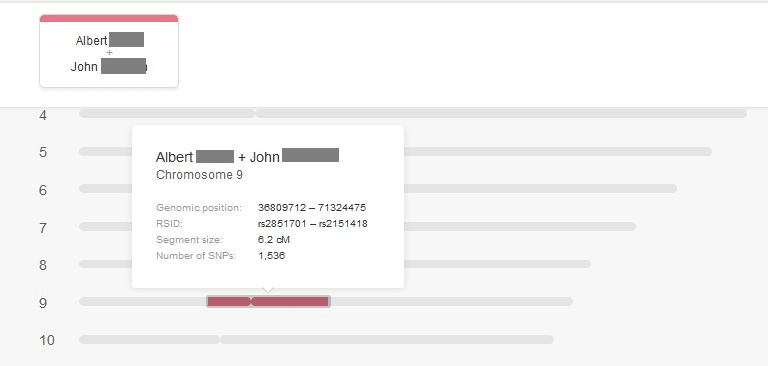
This particular segment is pretty small (6.2 cMs), but it could be a piece of DNA passed down from the common ancestor that Albert and John share.
Conclusion
I hope that this post has helped you understand how to use the My Heritage Chromosome Browser. Comparing DNA in a chromosome browser is a powerful tool that can really help you learn a lot from your DNA matches.
If you have any questions about something that you read in this post, or if you would like to share your own tips, join us in the discussion below.
Thanks for stopping by today!


Larry(Laurence) Sevitt
Monday 24th of April 2023
Where are my DNA results ??? I have asked so many times & even spoke on the phone which no doubt you also earned on
Iva L Kelly
Sunday 12th of April 2020
I was shocked when I received my dna results and found no native American ancestry. I was raised from the beginning of my life visiting relatives on 177acres of land in Roscoe, NY. We helped our Great Aunt Heddy & Great Uncle Paul both Steenrods care for the farm on every Holiday until the farmhouse burnt down approx. 1975, and was sold to village people who turned into a gun club. Which caused my fathers untimely death when I was thirteen years old.